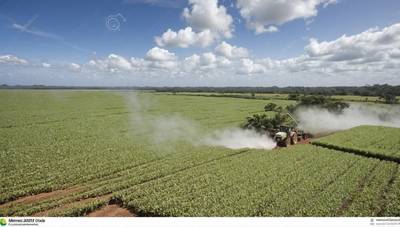Datagro estimates that Brazil's sugar production will increase to 41,42 million metric tons in 2025/26.
Plinio Natari, President of Agribusiness Consultancy Datagro, stated on Tuesday that Brazil's sugar output in the center-south region is expected to increase 3.1% over the previous season, to 41.42 millions metric tons.
The expected increase in production is despite a slight decline in sugarcane processed because the cane will be used to produce sugar rather than ethanol, which is expected to reach 52.1%. This is up from 48.1% the previous season.
Datagro estimated that the sugar production in the center-south area for the next crop season - April 2020 to March 2027 -- would be 43.2 millions metric tons.
Nastari, at a Sao Paulo industry event, said that the forecasted increase of 4% over the current season is due to an expected increase in sugarcane production.
Nastari noted that projections are dependent on the weather.
Sugarcane production is expected to reach 607,38 million tonnes.
After the 2025/26 season was plagued by wildfires and bad weather, there are few expectations for the so-called "bisada cane" -- the leftover raw material of the previous harvest -- in 2026/27.
Nastari, who noted that farmers were expanding planting, said the second third of next harvest will be good, while the final third depends on the rainfall in April.
Sugar production forecasts for 2026/27 assume a sugar allocation of 52%, which is in line with the current levels.
Datagro estimates that the total ethanol produced from corn and sugarcane in 2025/26 will be 33.23 billions liters. This is a decline of almost 5% as cane mills prioritise sugar over biofuel.
This decline is expected, despite an increase of nearly 20% in corn ethanol production. Datagro estimates that it will reach 10 billion liters by 2025/26.
Nastari didn't provide a detailed estimate of the total ethanol output in 2026/27 from cane and maize, but the corn ethanol produced in Brazil is expected to increase by 3 billion to 3,5 billion liters compared to the current season. Reporting by Roberto Samora; writing by Oliver Griffin; editing by Deepa Babyington
(source: Reuters)




